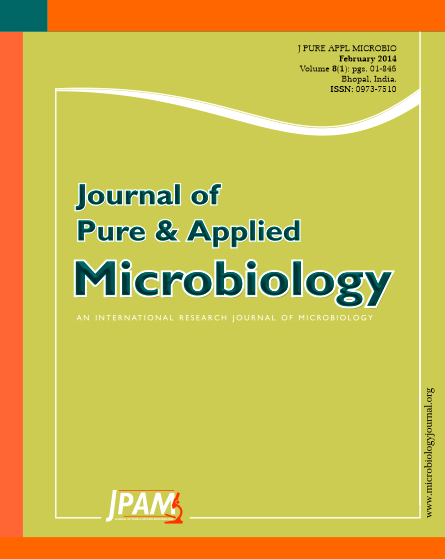A strain that was capable of producing an atypical laccase had been isolated and identified as Trametes hirsuta lg-9. Non-phenolic azo dye methyl red was oxidized by the atypical laccase. UV-Vis spectrophotometry was used for process monitoring of the oxidation products of methyl red. High performance liquid chromatography (HPLC) was used for detecting the products. Additionally, the structures of products were elucidated with electrospray injection mass spectroscopy. The products indicated the atypical laccase could directly attack non-phenolic azo dye methyl red. Probably degradation mechanism of the azo dye methyl red oxidized by the atypical laccase directly had been proposed. Factorial design, steepest ascent design and central composite design were successfully applied to optimize the decolorization conditions of methyl red. The optimum decolorization of methyl red was approximately 80% at enzyme concentration of 1.8 U l-1, pH 4.93, time 130.23 min.
Decolorization, Laccase, Mediator, Methyl red, Response surface methodology
© The Author(s) 2014. Open Access. This article is distributed under the terms of the Creative Commons Attribution 4.0 International License which permits unrestricted use, sharing, distribution, and reproduction in any medium, provided you give appropriate credit to the original author(s) and the source, provide a link to the Creative Commons license, and indicate if changes were made.


